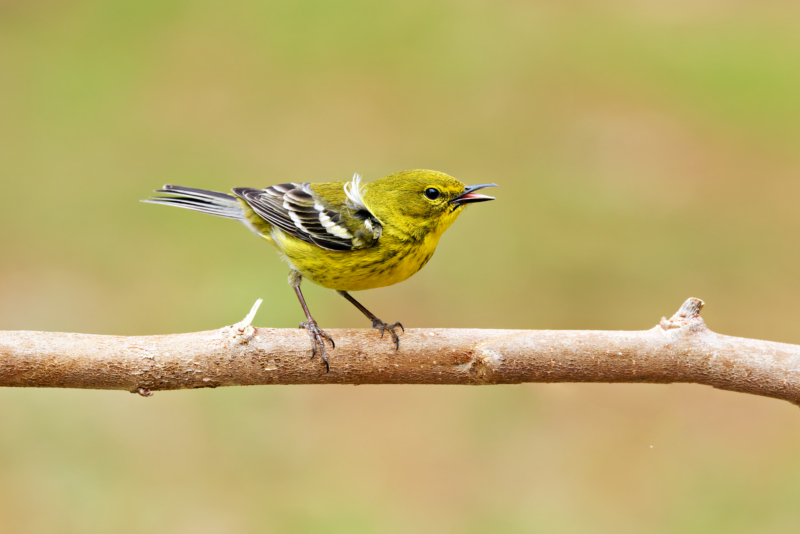Today’s featured feathered friend is a returning favorite – the Pine Warbler! As some of you may know from previous posts (Enjoying Pine Warblers in Arkansas and The Suet-Loving Songbird: Pine Warblers in Arkansas), I’ve had the pleasure of observing these little yellow bundles of energy around my suet feeder. But my recent encounter sparked some new discoveries about these fascinating birds.

While pine forests are their preferred stomping grounds, Pine Warblers can also adapt to denser conifer stands or even small pockets of pine trees within mostly deciduous forests. Interestingly, their winter range stretches further than their breeding grounds. Apparently, they’re less picky about their digs during the off-season (according to The Texas Breeding Bird Atlas).
These Pine Warblers are champions of chick-raising, potentially raising an impressive 2-3 broods per year! Both parents work incredibly hard to keep their hungry chicks fed, who leave the nest after just 10 days old. The female takes the lead on nest-building, crafting a neat and well-hidden home in the crook of a pine tree. Pine needles, twigs, grass, and even spider silk are used as building materials. The nest typically holds 3-5 eggs, which the female incubates for a little over a week (12-14 days). It’s interesting to note that Brown-headed Cowbirds rarely try to sneak their eggs into Pine Warbler nests.
Though insects and spiders found in pine trees are their main course, Pine Warblers have a surprising sweet tooth for seeds, especially those from pine trees. This fondness for seeds explains their occasional visits to backyard feeders in search of suet or other soft foods – a rarity amongst most warbler species. In fact, during winter when their usual arthropod prey is scarce, Pine Warblers have been spotted enjoying corn, sunflower seeds, and even suet at feeders.
So, the next time you see a Pine Warbler flitting around your backyard, remember these fascinating facts! These little survivors are resourceful and adaptable, making them a wonderful addition to any birdwatching adventure.
